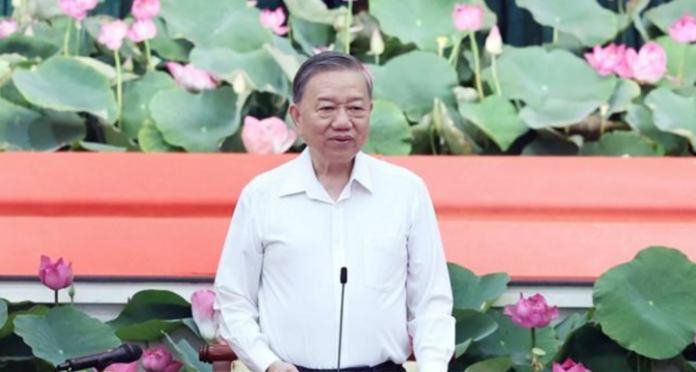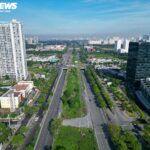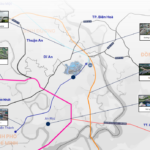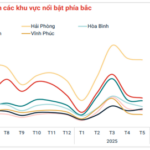On June 18th, during a meeting with General Secretary To Lam, leaders of Ho Chi Minh City, Binh Duong, and Ba Ria-Vung Tau reported on their socio-economic development in the first half of the year and proposed several mechanisms to boost growth post-merger.
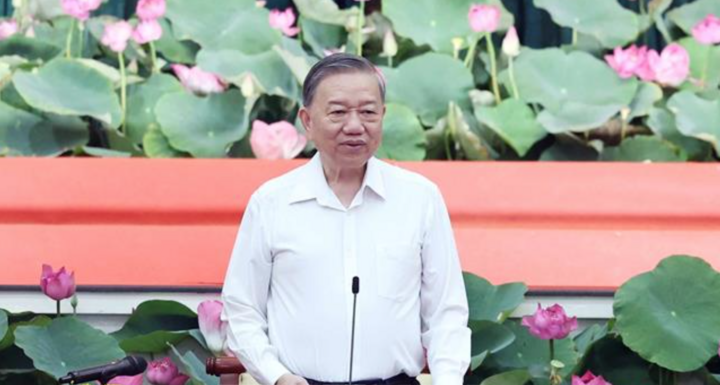
General Secretary To Lam speaks at the meeting.
Ho Chi Minh City’s Deputy Secretary of the Party Committee, Nguyen Thanh Nghi, proposed that the Central Government soon issue special mechanisms for the city post-merger.
Specifically, Ho Chi Minh City, Binh Duong, and Ba Ria-Vung Tau suggested that the National Assembly and the Government allow Ho Chi Minh City to retain all land fund revenues from 2026 to 2030 to invest in infrastructure. They also proposed that the National Assembly soon issue a resolution on establishing an international financial center in Ho Chi Minh City to boost socio-economic development.
Ba Ria-Vung Tau province also reported on two important projects to materialize Resolution 24, including piloting a number of special mechanisms and policies for Con Dao district and establishing a free trade area associated with Cai Mep Ha seaport. Both projects have been completed and submitted to the competent authorities. The province proposed that the Politburo and the Secretariat soon consider and promulgate them to create a new development momentum.
The leaders of the three localities also proposed that the Central Government soon allocate resources to invest in a multi-mode transport system to reduce the burden on road transport and shorten travel time. Priority should be given to investing in urban railway routes such as the Suoi Tien – New Binh Duong City route and other routes connecting the region.

Ho Chi Minh City’s Deputy Secretary of the Party Committee, Nguyen Thanh Nghi. (Photo: Viet Dung/Sai Gon Giai Phong Newspaper)
Ho Chi Minh City also proposed that the Government soon issue a “green channel” mechanism to attract strategic investors, both domestic and foreign, in the fields of planning, construction permitting, labor, science and technology, and digital transformation.
According to Mr. Nghi, following the directions of the Politburo, the Secretariat, and the Standing Committee of the Ho Chi Minh City Party Committee, they have coordinated with the Standing Committees of the Binh Duong and Ba Ria-Vung Tau Party Committees to evaluate officials and build personnel plans for the Party Committee, the Standing Committee, and the post-merger organization. These plans have been submitted to the Central Organization Commission for appraisal.
Regarding organizational apparatus and administrative units, the three localities have proactively and urgently implemented the Party’s guidelines on streamlining the apparatus to ensure efficiency and suitability for the new development phase.
Ho Chi Minh City has completed a proposal to eliminate the district-level administration and rearrange communal-level administrative units, reporting it to the Government. The city has also developed specific guidelines to ensure a smooth transition without interruptions. Additionally, the city has finalized a proposal to terminate the operations of the current district- and commune-level Party Committees and establish commune-level Party Committees directly under the Ho Chi Minh City Party Committee.
Crucial tasks such as digitizing documents, creating new administrative boundary maps at the commune level, rearranging specialized agencies at the provincial level, restructuring press agencies, and rearranging public non-business units have been synchronously implemented by Ho Chi Minh City. Since June 6th, the software for the Internet-based Operational Information System has been officially operated within the Ho Chi Minh City Party Committee bloc.
Furthermore, Ho Chi Minh City has promoted administrative reforms and completed the Information System for Handling Administrative Procedures to ensure continuous and effective service for people and businesses. The city has also implemented decentralization and delegation of authority between the People’s Committees and Chairpersons of communal-level People’s Committees, reviewing the competencies of different sectors to prevent overlaps, omissions, or interruptions.
The city pays special attention to supporting policies for officials, civil servants, public employees, and laborers affected by the reorganization process, including housing, vocational training, job introduction, and startup capital support.
Post-merger, Ho Chi Minh City has an area of 6,772.65 km2, a population of over 14 million, and 168 administrative units directly under its authority, forming a new supercity in the Southeast region.
“TT AVIO – Japanese Investment Fund: 30 Months of Interest-Free Support”
In a competitive real estate market where affordable housing is hard to come by, TT AVIO stands out not only for its convenient location and trend-setting amenities but also as one of the few projects that enable young people to achieve their dream of homeownership without compromising their financial future.
The Capital’s Housing Conundrum: Unraveling the Reasons Behind Hanoi’s Sky-High Property Prices, Doubling Ho Chi Minh City’s – Experts Reveal Areas with Opportunities in the Next Six Months
“Recent insights shared by Mr. Dinh Minh Tuan, Regional Director of Batdongsan.com.vn for Southern Vietnam, reveal an interesting trend. According to Mr. Tuan, investors are now channeling their funds into more affordable areas and biding their time for strategic opportunities in the upcoming periods. This shift in investment strategy showcases a prudent approach, given the current market dynamics and the potential for future growth in these underserved regions.”
The Skyway Link: Unveiling the Route Connecting Saigon’s Southern District and Long Thanh Airport
The construction of a two-tier, high-speed road will create a vital transport link between Tan Son Nhat and Long Thanh airports. This ambitious project will not only reduce travel time between the two airports but also revolutionize the transportation landscape in the region. With a seamless connection, passengers can look forward to a more efficient and convenient travel experience, boosting the potential for economic growth and development.
Title: Is Thu Duc University Village the New Real Estate Hotspot in Eastern Ho Chi Minh City?
With its convenient location, affordable housing, and ever-expanding infrastructure, the area surrounding Thu Duc University Village is a real estate hotspot. This prime location offers easy connectivity, making it an attractive prospect for investors and parents seeking accommodation for their university-bound children. The continuous development of the area’s infrastructure further enhances its appeal, creating a thriving and desirable community.
“Highlands Coffee Introduces the ‘Drive-Thru’ Concept to Vietnam: A Convenient, Stay-in-Your-Car Experience.”
The “drive-thru” model is a convenient and efficient way of serving customers without requiring them to step out of their vehicles. With this innovative approach, customers simply drive up to the order station, place their orders, make payments, and collect their purchases, all from the comfort of their cars. This seamless process revolutionizes the way people experience on-the-go services, ensuring speed, ease, and convenience like never before.


























